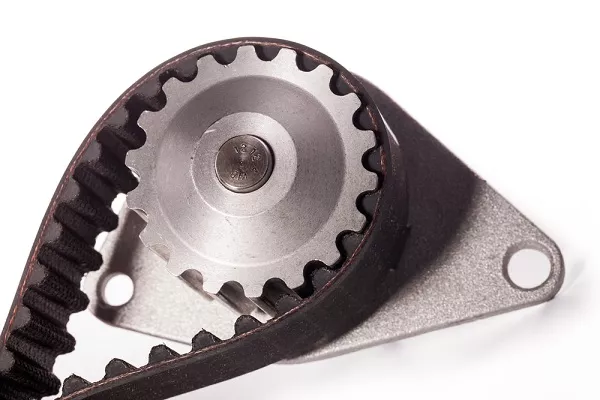A timing belt is a part of an internal combustion engine which is made of rubber. It helps the camshaft and the crankshaft of the vehicle to fit and synchronize so that the timing of the valve’s closing and opening is always accurate.

A timing belt is a part of an internal combustion engine which is made of rubber
Some vehicles use metal chains to replace the timing belt, but they all work the same. If the timing of the valve opening and closing is incorrect, the car will not be able to operate correctly or even could not operate at all. In addition, the timing belt also adjusts auxiliary system and water pump. Due to its importance, if the timing belt has problems, the mechanic will immediately detect the technical error and is likely to recommend replacing a new belt.
Let's with Philkotse.com find out the principle of operation of the timing belt as well as when it should be replaced.
1. How does a timing belt work?
As a matter of fact, four-stroke engines will have the following strokes or stages of operation:
- Intaking: The piston moves down and the intake valve opens, allowing the air and fuel mixture to enter the cylinder. At this stage, the exhaust valve is closed.
- Compression: The piston moves upward, compressing the fuel and air mixture. All valves are closed.
- Combustion: The piston moves downwards, allowing the spark plug to burn fuel and air mixture, providing power to the vehicle. All valves are closed.
- Discharging: The exhaust valve opens to allow the fuel and excess air to be discharged from the engine. The intake valve is closed.
During these phases, the timing belt operates to rotate the camshaft bearings (some engines have two camshaft bearings) and synchronize it with the crankshaft. A bad timing belt will cause asynchronism between the camshaft and the crankshaft, and this is very dangerous for the engine. It causes the valve to open and close at incorrect points of time, potentially bending or destroying the piston and valves.
>>> Related:
- Drive belt vs timing belt: What are the differences?
- Serpentine vs Timing Belt: What are the functions and differences?
Timing Belt Animation
2. When to replace car timing belt?
The driver can identify the problem at that moment. The noise from the timing belt, such as the hissing of the rubber belt or the clanking sounds of the metal chain, is unambiguous evidence of the problem. Because the timing belts are important, you should pay close attention to abnormal signs in cars. As a general rule, the driver should be attentive to the belt when the car has run for about 100,000 - 150,000km, or you should at least conduct regular car inspections.
For that reason, car manufacturers make the necessary recommendations on the most appropriate time for replacing a new belt. However, as a general rule, when the car has operated for about 120,000km, it is the most appropriate time to replace the timing belt to ensure the engine continues to operate effectively.
>>> Find out more handy tips and advice on car maintenance here.
Recent posts
- 4 Essential Care Tips for Maintaining Your Car Engine Nov 30, 2022
- How To Know If Your Car Engine Needs An Overhaul Aug 04, 2020
- Dealing with Faulty Fan Belts and Their Squeaking Sound Dec 29, 2020
- Spotting 8 Early Symptoms of Engine Problems Jul 05, 2018











